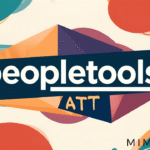The Evolution of Play-to-Earn, From Speculation to Sustainable Economies

Major changes have occurred in the gaming world over the last few years, thanks to blockchain’s popularity and the ability to conduct different types of online interactions. The transformation is largely centered on the play-to-earn (P2E) model, which lets people trade things they earn from the game for real money.
Soon after launching, P2E platforms moved away from their earliest goal and became centers of volatile hype.” Modern games and the people making them are working to ensure the model includes more sustainable and even game economies.
Because the bitcoin price often mirrors the mood of crypto investors everywhere, many experts monitor the bitcoin price chart to see how crypto trends align.
The Rises and Falls of a Speculative Boom
At their start, play-to-earn games promised that players would earn money from their gaming skills. Millions of players worldwide were drawn to blockchain-based titles like Axie Infinity by the chance to earn native tokens while playing.
In times when work was hard to come by, people could earn additional income by selling crypto tokens on digital exchanges for stablecoins or local currency.
However, growth was also associated with losses. In many early P2E games, designs rewarded players for playing but did not support them in the long run. Incentives for using the ecosystem made it so players did not have to work for its lasting sustainability.
When the availability of tokens increased or interest decreased, most users’ financial motivation for playing video games became very low. The outcome was huge numbers of players quitting, tokens losing their value, and even the failure of several game ecosystems.
These events warned us about the risks. When games overdid it by heavily inflating speculative tokens, they usually didn’t last and weren’t fun. It appears that people saw these tokens as simplified forms of yield farming, where customers invested only for short periods and did not take part in the project’s community life.
A New Focus on Game Quality and Player Experience
As a result of P2E’s early issues, the industry is now undergoing a major adjustment process. Nowadays, developers are focusing on games that are of good quality, interesting to play, and have engaged fan communities. The primary goal is to ensure players are initially attracted to the entertainment in a game and only later to possible earnings.
It helps solidify the industry and shows how it is growing. When creating new sustainable P2E games, thought processes now go into mixing in-game prizes, burning tokens, finding helpful uses for them, and controlling their supply. Unlike before, issuance is being controlled, and tokens are granted only when players achieve real results in the game.
The earning model now combines different approaches in several situations. Some games give players NFTs in the form of in-game outfits, land ownership, or crafting materials that they can sell or trade with each other.
Many times, these assets play a role in the game, which gives players reason to keep playing and invest their resources instead of taking them out.
Community Ownership and Governance
One significant advantage of blockchain gaming is that it allows communities to own a part of what they build. Conventional games are run by publishers who manage everything, but blockchain games can give their players power.
By using governance tokens or DAOs, gamers participate in deciding what the game will look like, how its economy is organized, and who receives the valuable items.
Since we are involved at this stage, people tend to stick with us for an extended period. A player’s sense of involvement helps them contribute best to the ecosystem. Tournament organizing, creating fan-focused content and assisting new users are just some ways community members help build extra value for the project.
Dependence on Varied Ways of Generating Income
Play-to-earn economies that last should have multiple ways for their developers to make money. Putting all your efforts into selling tokens or NFTs can noticeably affect your performance in a short-lived and challenging manner. Recently, game developers started to use season passes, aesthetic upgrades and subscriptions alongside cryptocurrencies.
If developers mix traditional Web2 income sources with Web3 elements, they can consistently earn enough to fund the game, keep servers up, and encourage growth within the community.
Using both currencies keeps the ecosystem safe from crypto market changes and attracts the attention of mainstream gamers who might doubt purely speculative coins.
Making Sure There Is an Easy Path to Starting
To make play-to-earn known worldwide, ensuring everyone can participate should come first. At the start, many games on blockchain involved figuring out how to set up wallets, manage keys and purchase high-risk tokens before you could play. As a result, people who didn’t know about crypto could not join the market.
Improved P2E games are now making it easier for players to join. Now, you don’t need to have crypto already to play – you can start earning from the game before mentally investing and can learn about blockchain while playing.
Certain blockchain services lower the gas price or link up with fiat currencies to give non-technical individuals a smoother start. When anyone can try blockchain gaming, it is healthier for the industry and encourages it to grow.
Thinking about the Future, What Happens Next?
For the play-to-earn sector to succeed, it needs to keep players, investors, and developers on the same page. Value is taken out and then put back into sustainable economies. The industry is building a foundation for a new era of blockchain gaming using gameplay, community control, and responsible token distribution.
You can still get paid for playing, yet it is understood that real achievement depends on something other than fancy rewards. Planning and upkeep must be thought out and a real focus should be on what players enjoy over the long term. Now that the gaming world is better established, play-to-earn creates worlds users want to visit regularly.





